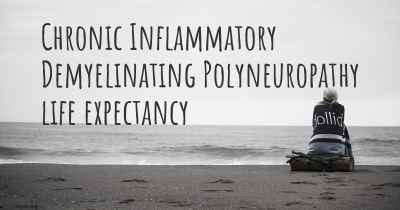Which are the symptoms of Chronic Inflammatory Demyelinating Polyneuropathy?
See the worst symptoms of affected by Chronic Inflammatory Demyelinating Polyneuropathy here

Symptoms of Chronic Inflammatory Demyelinating Polyneuropathy (CIDP)
Chronic Inflammatory Demyelinating Polyneuropathy (CIDP) is a rare neurological disorder characterized by chronic inflammation of the peripheral nerves. It is considered a chronic form of Guillain-Barré syndrome (GBS) and shares some similarities in terms of symptoms and treatment. CIDP affects the myelin sheath, the protective covering of the nerves, leading to impaired nerve signal transmission and a range of symptoms.
Progressive Weakness and Fatigue
One of the hallmark symptoms of CIDP is progressive weakness, which typically starts in the legs and then spreads to the arms. This weakness can make it difficult to perform daily activities such as walking, climbing stairs, or lifting objects. The weakness may worsen over time and can be accompanied by fatigue, making it challenging for individuals with CIDP to engage in physical activities.
Tingling and Numbness
Tingling and numbness, also known as paresthesia, are common symptoms of CIDP. These sensations often start in the toes and fingers and gradually spread to the hands and feet. The tingling may be described as a "pins and needles" sensation or a feeling of electric shocks. Numbness can affect the ability to feel touch, temperature, or pain in the affected areas.
Loss of Reflexes
CIDP can lead to the loss of deep tendon reflexes, such as the knee jerk reflex. This occurs due to the damage to the nerves responsible for transmitting these reflex signals. The absence of reflexes can be a diagnostic clue for CIDP and is often assessed by a healthcare professional during a physical examination.
Impaired Balance and Coordination
As CIDP affects the peripheral nerves responsible for muscle control, it can result in impaired balance and coordination. Individuals with CIDP may experience difficulty walking in a straight line, stumbling, or feeling unsteady on their feet. This can increase the risk of falls and injuries.
Pain and Muscle Cramps
Pain is a common symptom of CIDP and can manifest as aching, burning, or sharp sensations. The pain may be localized to specific areas or widespread throughout the body. Muscle cramps, which are sudden and involuntary contractions of muscles, can also occur in individuals with CIDP.
Difficulty with Fine Motor Skills
CIDP can affect the fine motor skills required for tasks such as writing, buttoning clothes, or picking up small objects. Weakness and sensory disturbances in the hands and fingers can make these activities challenging and may require adaptive strategies or assistive devices.
Autonomic Dysfunction
In some cases, CIDP can affect the autonomic nervous system, which controls involuntary bodily functions such as blood pressure, heart rate, and digestion. Autonomic dysfunction in CIDP can lead to symptoms such as lightheadedness, dizziness upon standing (orthostatic hypotension), abnormal sweating, and gastrointestinal issues.
Respiratory Complications
In severe cases of CIDP, respiratory muscles can be affected, leading to breathing difficulties. This can result in shortness of breath, reduced lung capacity, and the need for respiratory support. However, respiratory complications are less common in CIDP compared to acute forms of Guillain-Barré syndrome.
Variable Course and Fluctuating Symptoms
CIDP is a chronic condition, and its symptoms can vary in severity and fluctuate over time. Some individuals may experience periods of remission where symptoms improve or disappear temporarily, while others may have a progressive course with worsening symptoms. The unpredictable nature of CIDP can make it challenging to manage and treat effectively.
If you or someone you know is experiencing any of these symptoms, it is important to consult a healthcare professional for a proper diagnosis and appropriate management. Early detection and treatment can help improve outcomes and quality of life for individuals with CIDP.








